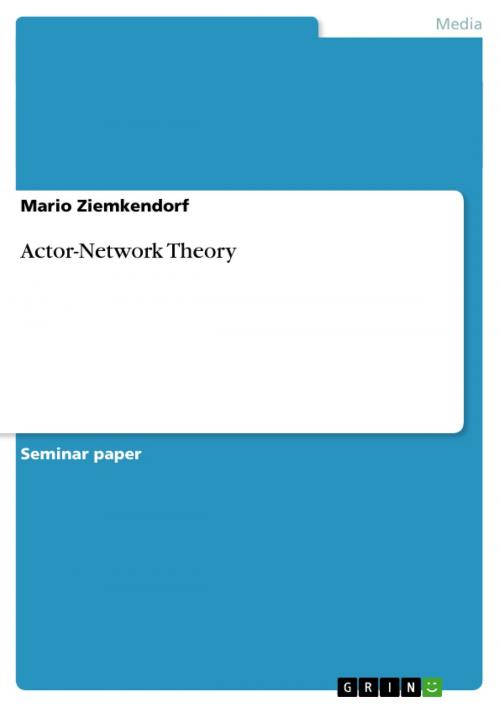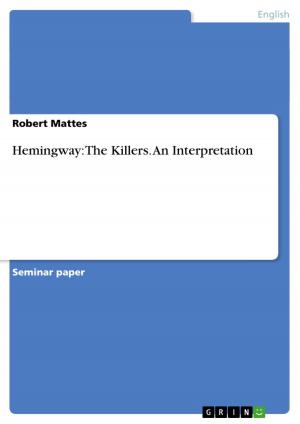| Author: | Mario Ziemkendorf | ISBN: | 9783640149254 |
| Publisher: | GRIN Publishing | Publication: | August 29, 2008 |
| Imprint: | GRIN Publishing | Language: | English |
| Author: | Mario Ziemkendorf |
| ISBN: | 9783640149254 |
| Publisher: | GRIN Publishing |
| Publication: | August 29, 2008 |
| Imprint: | GRIN Publishing |
| Language: | English |
Seminar paper from the year 2007 in the subject Communications - Theories, Models, Terms and Definitions, grade: 2,3, Technical University of Ilmenau (Institute of Media and Communication Science), course: Organisational Communication, 16 entries in the bibliography, language: English, abstract: In these days nearly everybody knows different kinds of networks. There are networks all around us. They accompany us at home, at work, on travelling or in our free time. Almost none network is separted and stands for it´s own, even insulated monks are influenced by the outside world. The whole world is subdivided in networks which are more or less complex. They are all connected in different ways so that every network overlaps another network. Bruno Latour hits the bull´s eye with the following statement: 'With the new popularization of the word network, it now means transport without deformation and an instantaneous, unaffected access to every piece of information.' (Latour 1999, p.15). This term paper concerns with the Actor-Network Theory, shortly called ANT. ANT sometimes specified as sociology of translation is primarily connected with the work of representatives like Bruno Latour, Michael Callon and John Law. The essential characteristic of ANT is the equitable analysis of human and nonhuman actors. They will be esteemed as equal actors in networks which want to achieve a common purpose. The opening chapter of this term paper will give you a rough historical overlook of ANT. Before the main ideas of ANT will disclose, the relevant specifics about ANT will be presented which are also the premises of ANT. Then detailed information about several key concepts of ANT will be added. In the end the critical points and a short conclusion of ANT will conclude this work.
Seminar paper from the year 2007 in the subject Communications - Theories, Models, Terms and Definitions, grade: 2,3, Technical University of Ilmenau (Institute of Media and Communication Science), course: Organisational Communication, 16 entries in the bibliography, language: English, abstract: In these days nearly everybody knows different kinds of networks. There are networks all around us. They accompany us at home, at work, on travelling or in our free time. Almost none network is separted and stands for it´s own, even insulated monks are influenced by the outside world. The whole world is subdivided in networks which are more or less complex. They are all connected in different ways so that every network overlaps another network. Bruno Latour hits the bull´s eye with the following statement: 'With the new popularization of the word network, it now means transport without deformation and an instantaneous, unaffected access to every piece of information.' (Latour 1999, p.15). This term paper concerns with the Actor-Network Theory, shortly called ANT. ANT sometimes specified as sociology of translation is primarily connected with the work of representatives like Bruno Latour, Michael Callon and John Law. The essential characteristic of ANT is the equitable analysis of human and nonhuman actors. They will be esteemed as equal actors in networks which want to achieve a common purpose. The opening chapter of this term paper will give you a rough historical overlook of ANT. Before the main ideas of ANT will disclose, the relevant specifics about ANT will be presented which are also the premises of ANT. Then detailed information about several key concepts of ANT will be added. In the end the critical points and a short conclusion of ANT will conclude this work.















